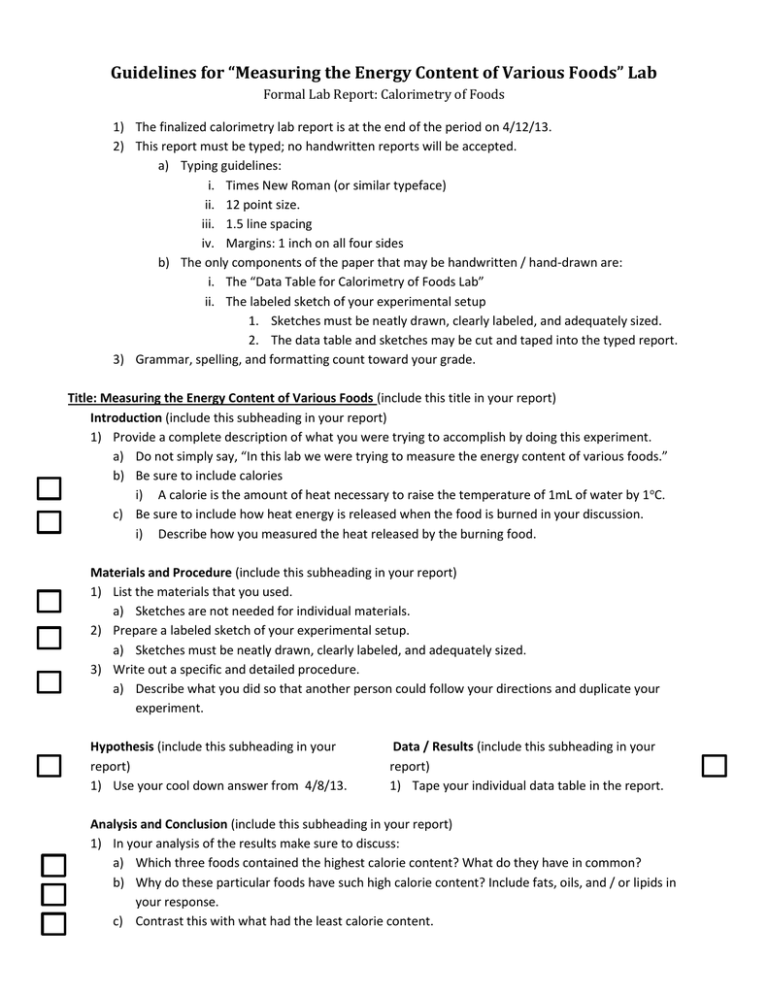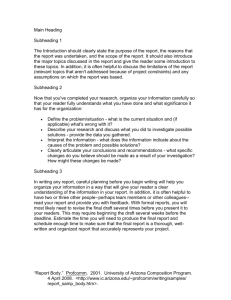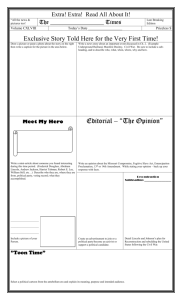13-04-10,11 Formal Calorimetry Lab Report Handout
advertisement

Guidelines for “Measuring the Energy Content of Various Foods” Lab Formal Lab Report: Calorimetry of Foods 1) The finalized calorimetry lab report is at the end of the period on 4/12/13. 2) This report must be typed; no handwritten reports will be accepted. a) Typing guidelines: i. Times New Roman (or similar typeface) ii. 12 point size. iii. 1.5 line spacing iv. Margins: 1 inch on all four sides b) The only components of the paper that may be handwritten / hand-drawn are: i. The “Data Table for Calorimetry of Foods Lab” ii. The labeled sketch of your experimental setup 1. Sketches must be neatly drawn, clearly labeled, and adequately sized. 2. The data table and sketches may be cut and taped into the typed report. 3) Grammar, spelling, and formatting count toward your grade. Title: Measuring the Energy Content of Various Foods (include this title in your report) Introduction (include this subheading in your report) 1) Provide a complete description of what you were trying to accomplish by doing this experiment. a) Do not simply say, “In this lab we were trying to measure the energy content of various foods.” b) Be sure to include calories i) A calorie is the amount of heat necessary to raise the temperature of 1mL of water by 1 oC. c) Be sure to include how heat energy is released when the food is burned in your discussion. i) Describe how you measured the heat released by the burning food. Materials and Procedure (include this subheading in your report) 1) List the materials that you used. a) Sketches are not needed for individual materials. 2) Prepare a labeled sketch of your experimental setup. a) Sketches must be neatly drawn, clearly labeled, and adequately sized. 3) Write out a specific and detailed procedure. a) Describe what you did so that another person could follow your directions and duplicate your experiment. Hypothesis (include this subheading in your report) 1) Use your cool down answer from 4/8/13. Data / Results (include this subheading in your report) 1) Tape your individual data table in the report. Analysis and Conclusion (include this subheading in your report) 1) In your analysis of the results make sure to discuss: a) Which three foods contained the highest calorie content? What do they have in common? b) Why do these particular foods have such high calorie content? Include fats, oils, and / or lipids in your response. c) Contrast this with what had the least calorie content.







